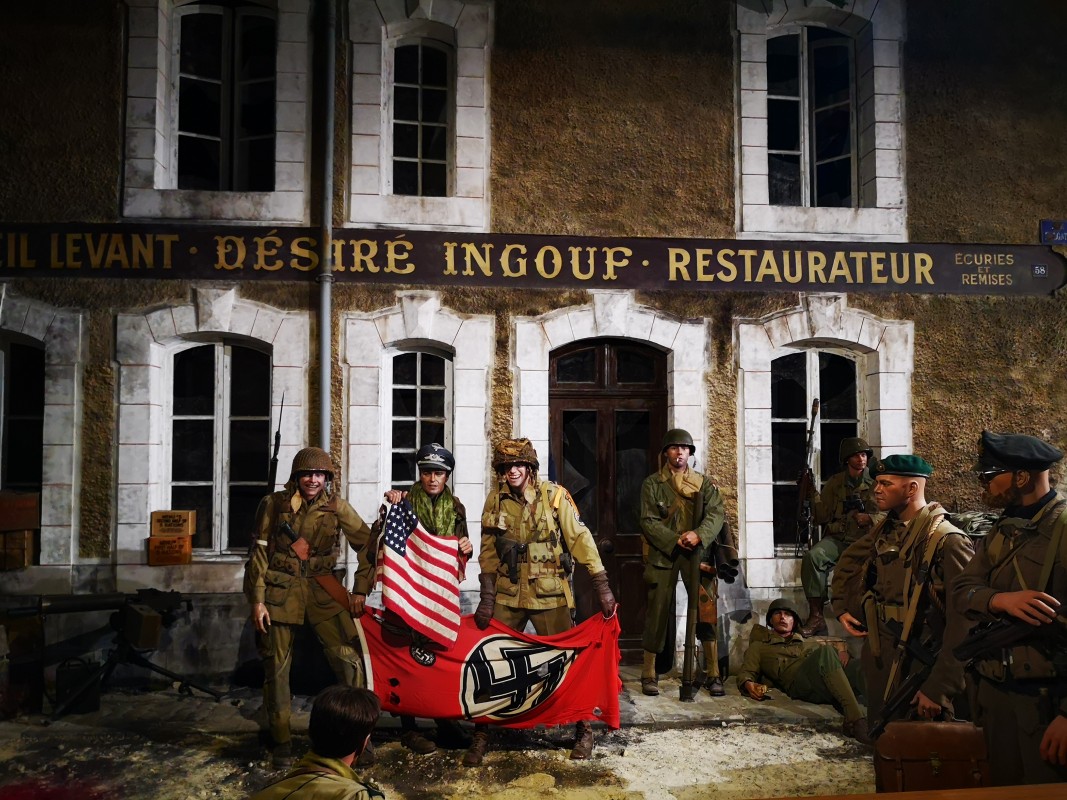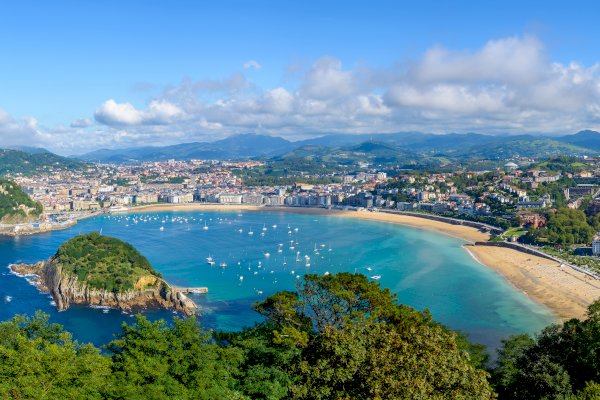
10 facts you probably didn't know about the Normandy D-Day landings

10 UNUSUAL FACTS ABOUT THE NORMANDY D-DAY LANDING
6th of June, 1944
On this day, the West of France saw a perfectly organized landing, a truly technical, economical and human feat…even though it didn’t really happen as planned: dangerous German defenses, important human loss at the beginning leading to a complete disarray and a delaying the troops’ progress on the ground…
Here for you, are some points that you might not know about this landing.
1- A tricky choice
On a strategic point of view, the landing was supposed to happen in Calais, an important port city of the North of France. It was close to the English shores and offered the shortest way to Germany. The Nazis forces knew that very well, and had reinforced their defenses there.
The Allies had to find a place where the defenses were weaker. Situated at less than 240km (150 mi) from the British airports (the planes had a limited autonomy)and having large and deep beaches (for human and equipment landing), the winner was: Normandy!!

2- Damned weather
If you are a meteorologist, you would have been a very useful person during D-Day preparation! The landing was originally planned for spring of 1944, but was postponed several times because of the very bad weather conditions (is the weather that bad in Normandy??). Also, the ideal conditions were very specific: a rising tides that doesn’t hide the obstacles on the beaches, and a late full moon. The paratroopers needed to be in the dark whereas the bombers needed a bit of light to see their targets. Those conditions are present only few days per month, in June it was between the 5th and the 7th. Because of a storm in the Channel, the 6th was chosen as D-Day.

3- Go like clockwork…
The kick-off was given at midnight between 5th and 6th of June. The airborne troops (paratroopers and gliders) were the first to land on the Normand ground. Their goal was essentially to take control of the main roads in order to make the Allie troops progress easier. Later in the night, at around 5H30, the Air Force would drop some bombs in order to destroy the German defenses. Then, at sunrise, starting at 6H30, the first barges would land the amphibian tanks and the Infantry on the beaches. From then troops progress would be timed.

4- …but with some unforeseen events
In the air, the Air Force was put in a difficult position by a thick fog, remaining inland. That’s why the bombers missed a lot of their targets. Many paratroopers finished their flight in the hinterland transformed into a swamp by the Nazis, trapped by the heavy weight of their equipment (70kg!).
At sea, the storm was not over at sunrise, creating a strong swell. Many soldiers were seasick; the pills they took were not effective. On the ground, on the Omaha Beach sector, the German Division was not the one that was expected: it was replaced by the infamous 352nd Infantry Division, which was back from the Russian front. The French Resistance sent a message to London by homing pigeon, but it was too late to take this new information into account.

5- “The long sobs of autumn violins…”
“…wound my heart with a monotonous languor”
Those famous verses of the French poet Paul Verlaine are known as the general message from London Radio announcing the Allies landing. However, it was just one message among many others. The first verse, broadcast on June 1st, 1944, was meant to warn the different Resistance organizations: “The hour of combat will come”. Those warnings were followed by call of actions: 210 messages broadcast during 16 minutes June 5th, 1944, ordering the railways and the telephone cables to be sabotaged, or to set ambushes against German reinforcements.

6- Code names
Omaha Beach, Gold Beach, Utah Beach, Juno Beach, Sword Beach, are some names that sound very familiar to us. But… Why do we use those English words? Even if Normandy was under English domination for a while, it became a French region ages ago!The answer is quite easy: as it is common for every military operation, the Allies chose those code names in order to name the different intervention areas that were defined.
Canadians would land alone on Juno Beach, and with the British on Sword Beach; the British would land on Gold Beach; and the Americans would be alone on Utah and Omaha Beach. The landing operations also had code names: Neptune for the coastline assault, Fortitude for the disinformation operation, since Overlord is used for the general D-Day operation.

7- An infallible defense
Hitler is sure of one thing: his Atlantic Wall is unbreachable. He knew that a second front on the west side by the Allies was a real threat, that’s why he put General Rommel in charge of protecting the French coasts. Erwin Rommel set up an “Atlantic Wall” composed of bunkers, mines, artillery batteries and stakes situated on the beaches, to protect against ships. They were informally nicknamed “the Rommel’s asparaguses”.
These defenses stretched from the North Cape in Norway to the border between France and Spain, in order to stop any attempt at landing. Despite Hitler’s best planning, his Wall was far from being perfect. In fact, it looked more like a pearl necklace: some areas were overprotected, like the Nord-Pas-de-Calais coasts and the main ports, whereas some other places were more vulnerable. Therefore, in 1944, the Normandy beaches were covered by mines, barbwires and various obstacles.

8- A diversion
After the night’s bombings, the German Forces could regroup and anticipate the Allies arrival. But that was still a surprise. The Resistance members had dynamited the telephone cables preventing the German communications. This meant that the forces in the Nord-Pas-de-Calais knew that a landing happened in the morning only the afternoon.
The German command had a slow reaction, they believed it was a diversion: to them the real landing could only happen in Calais. Hitler was woken up only at 10 am (!!): he was the only one who could order to send reinforcements. Thanks to that misunderstanding, the Allies faced only 17 Nazi divisions, over the 50 available, meaning 50 000 soldiers instead of 300 000 … Not so bad!

9- Blinded
But…wait a minute; Why did the German Forces not see anything coming, even though the radar performance was so improved during the war that they were able to detect a plane or a ship 37 Milles (60km) away?! It was because most of the radar stations were damaged or destroyed. Remaining radars were blinded by scramblers (aluminum strips sent in the air to create interferences). Clever!

10- Remembrance
On the American Cemetery site based in Colleville sur Mer, near Omaha Beach, is a capsule embedded in the ground. Inside are some press articles published at that time, and a message written by the General Eisenhower to the future generations. It’s meant to be opened on June 6th, 2044, a hundred years after D-Day.


Secured payments

easy cancellation

 Please wait
Please wait
























